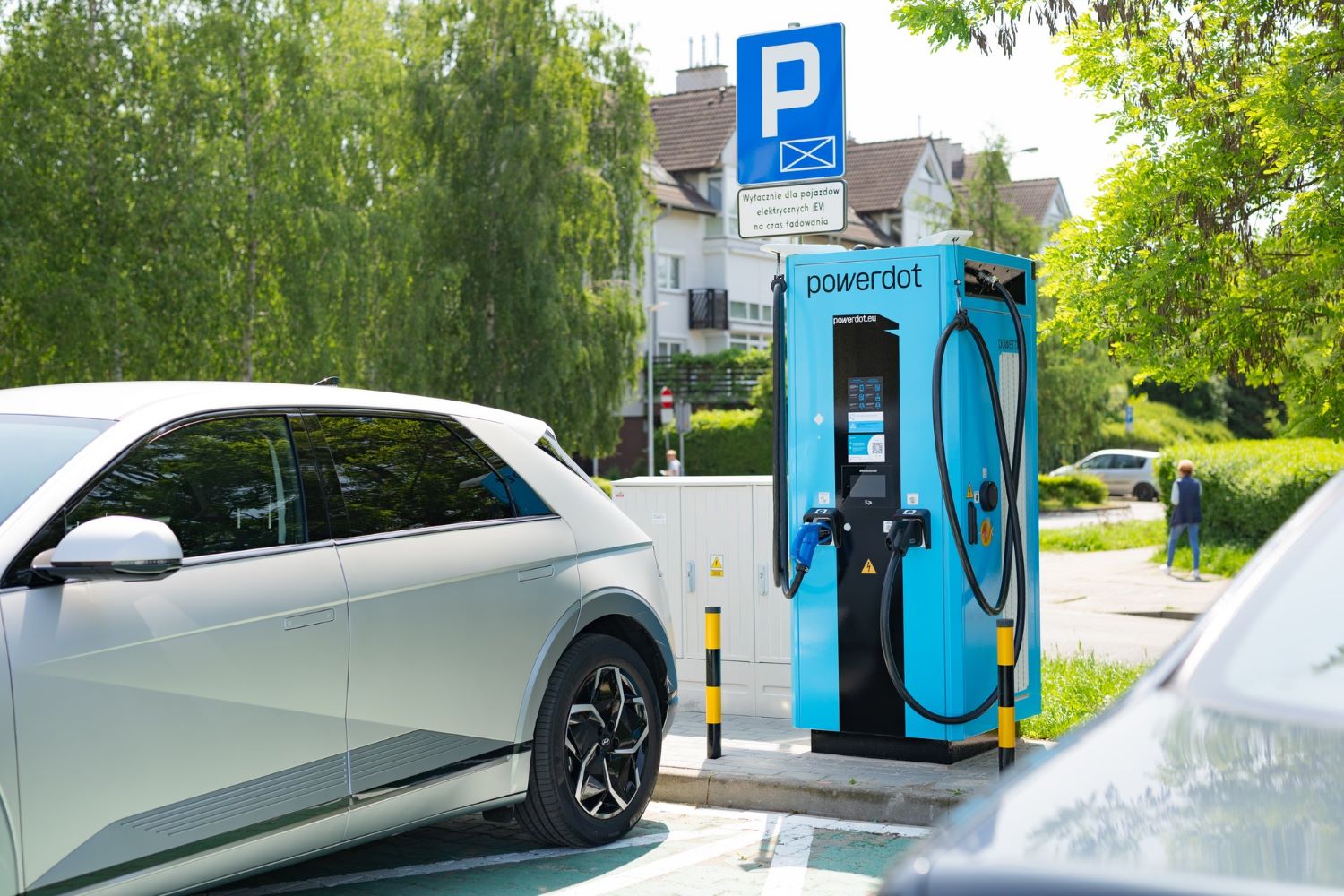Electric vehicles (EVs) are making a real difference in reducing carbon emissions. While they start with a bigger carbon footprint than conventional vehicles, they more than make up for it during their lifetime.
Thanks to eliminating tailpipe pollutants, the environmental impact of electric vehicles is much lower than that of gasoline or diesel vehicles.
In fact, a 2020 Commission study found that the average EU lifecycle climate impact of a lower-medium range BEV (battery electric vehicle) is around 45% of that of a gasoline car and 53% of a diesel car.
On top of that, EVs consume less than 1/3 of the energy required by conventional vehicles, which is a significant improvement.
With advancing battery technology and expanding charging infrastructure, the carbon footprint of EVs keeps shrinking.
Add government incentives and stricter emissions regulations, and you'll see why the shift to EVs is essential to sustainable transportation.
Impact on Carbon Emissions
Making a switch to an EV is a vital step in reducing carbon emissions from the transportation sector, which is a leading contributor to global greenhouse gas emissions.
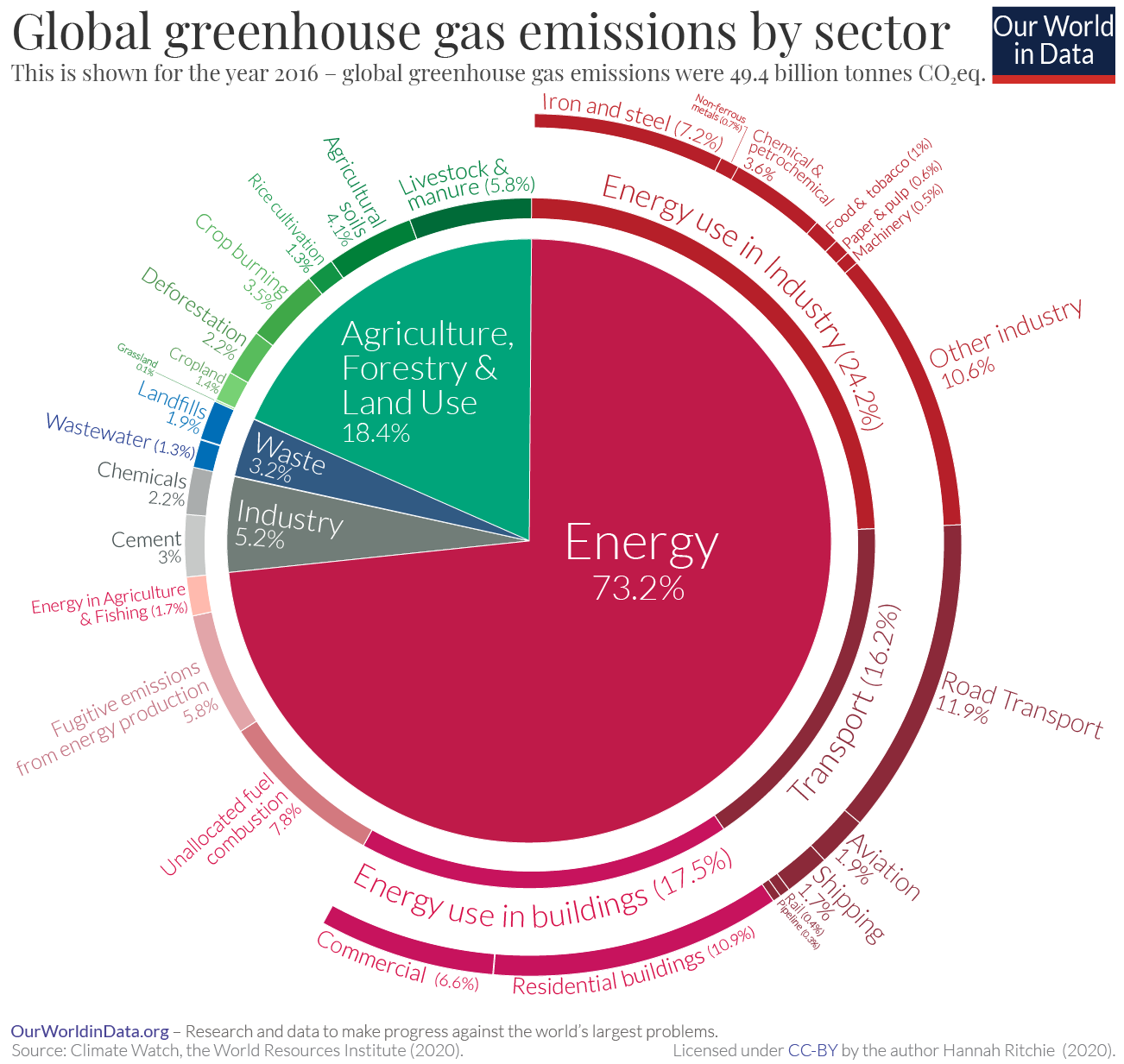
Multiple studies have shown that EVs have a remarkably smaller carbon footprint than conventional internal combustion engine (ICE) vehicles. Even if we account for the cost of battery manufacturing, purchasing an electric vehicle is a more eco-friendly choice.
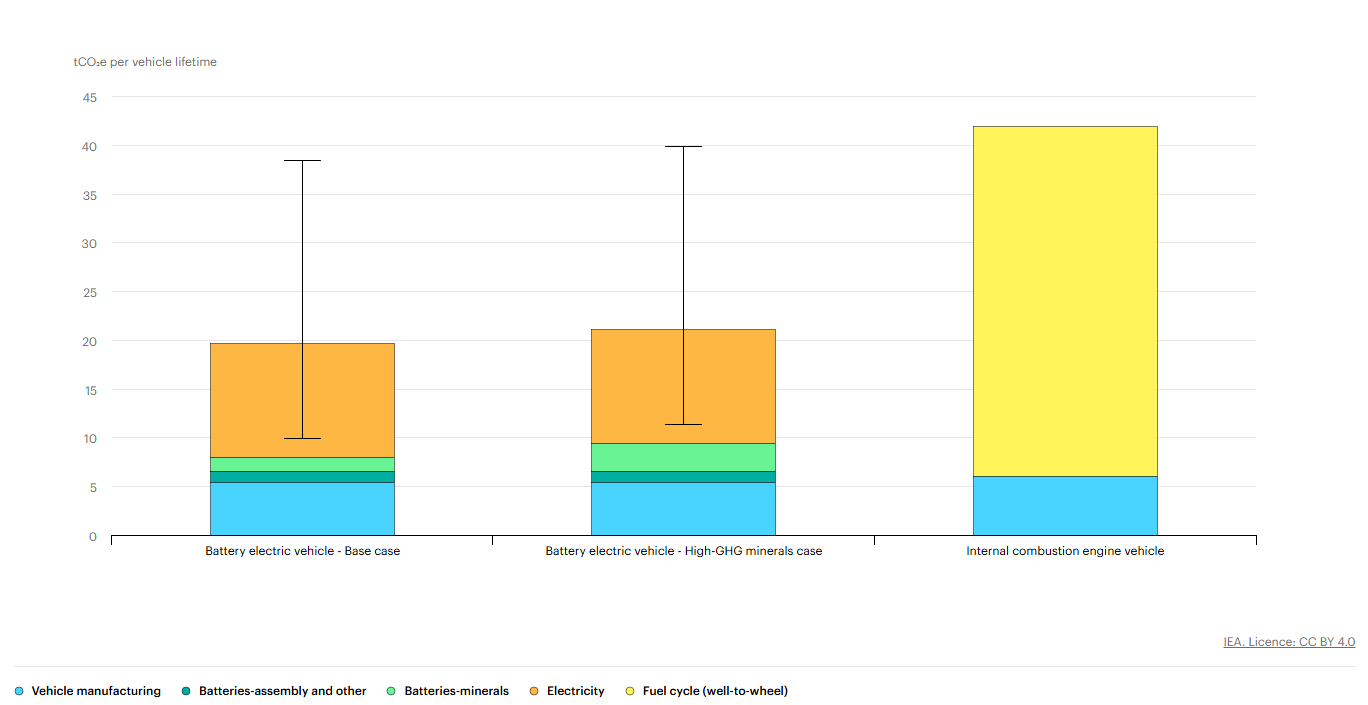
Findings reported by the Guardian support this claim, showing that even a worst-case BEV emits fewer grams of CO2 than vehicles running on gas.
Simply put, driving an EV is the superior choice if our goal is to significantly reduce carbon pollution.
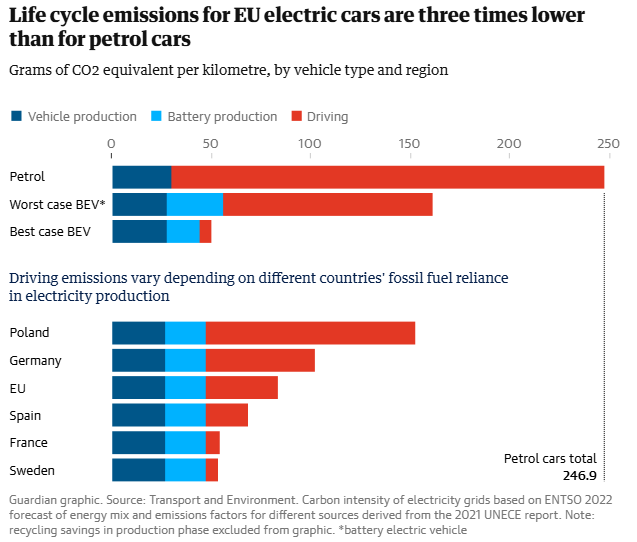
All this data tells us that emissions associated with electric vehicles, while far from non-existent, put less strain on the environment.
Lifecycle Emissions from EVs
One argument frequently made against the widespread adoption of electric cars is that emissions from the production of these vehicles actually make them a worse option in terms of their environmental impact.
Let's debunk this claim.
The lifecycle emissions of electric vehicles encompass all stages, from production to disposal. The most notable contributor to these emissions is indeed the manufacturing of the battery, which involves mining and processing raw materials like lithium, cobalt, and nickel.
Still, the fact that EVs produce zero tailpipe emissions tips the scale back in their favor.
Some may argue that emissions from electricity generation can be equally bad for the environment as direct emissions produced by vehicles with an internal combustion engine (ICE). However, it's important to take into account the source of the electricity used for charging.
If drivers use renewable energy sources, the carbon footprint of EVs is reduced. The same cannot be accomplished in the case of vehicles that run on gas.
The well-to-wheel emissions can vary greatly depending on the energy mix of the region in which the vehicle is used. For instance, countries with a higher proportion of renewable energy for EV charging see much lower overall emissions compared to those reliant on fossil fuels.
Here's a comparison to highlight the impact of renewable energy on EV lifecycle emissions:
| Scenario | Potential Lifecycle Emissions Reduction |
| EV with non-renewable energy | 17-30% |
| EV with partial renewable energy | 30-50% |
| EV with full renewable energy | 60-80% |
| Gasoline vehicle | 0% |
| Future potential with tech advancements | 80-90% |
Government Incentives
Governments worldwide offer tax credits to accelerate EV adoption and reduce carbon emissions. These incentives play a vital role in making electric vehicles more accessible.
Lowering the initial cost of EVs, which is the biggest hurdle for many people who want to make the switch, can have a massive impact on the automotive industry.
To help you understand how government incentives impact EV adoption, consider these key measures:
- Tax Credits: Many countries offer substantial tax credits for EV purchases.
- Emission Regulations: Stricter emission regulations are pushing manufacturers to produce more electric vehicles. By setting stringent CO2 emission limits, governments are compelling automakers to innovate and expand their EV offerings.
- EV Infrastructure: Investment in EV infrastructure, such as charging stations offered by Ekoenergetyka, is essential for widespread adoption. Many governments are funding the development of extensive charging networks to guarantee that EV owners have convenient access to charging facilities, making electric vehicles more practical for everyday use.
Technological Advancements

Advancements in battery technology and energy storage devices are at the forefront of finding new ways to reduce EV carbon footprint.
We've already witnessed several breakthroughs that cut the emissions from electric vehicles.
- Lithium-ion batteries, the current standard, have seen substantial improvements in energy density and lifespan. These advancements enable EVs to travel longer distances on a single charge, addressing one of the main concerns associated with grid emissions.
- Charging infrastructure is another critical area where technological advancements in EVs have made a considerable impact. The expansion of fast-charging networks across urban and rural areas has alleviated range anxiety, encouraging more people to switch to electric vehicles.
- Fast chargers, capable of replenishing an EV battery to 80% in under 30 minutes, are becoming more common, providing the convenience needed for long-distance travel.
- Smart grid technology also plays an important role in optimizing EV charging schedules and reducing strain on the power grid. By integrating EVs into a smart grid, energy providers can manage demand more efficiently.
- Solid-state batteries represent the next frontier in battery technology improvements. These batteries promise higher energy densities, faster charging times, and improved safety compared to traditional lithium-ion ones. Research and development in this area are progressing rapidly, with several companies aiming to bring solid-state batteries to market within the next few years.
Nevertheless, there's still a lot of work to do before we can fully eliminate vehicle emissions. Even hybrid cars, which are better for the climate than internal combustion vehicles, have a long way to go before they can compete with EVs.
MIT's report from 2019 shows that a fully electric vehicle emits about 25 percent less carbon than a comparable hybrid car. But soon, this might change.
Future Market Growth of Electric Vehicles
According to BloombergNEF, electric cars have already impacted fuel demand. With the electric grid steadily growing, this trend will likely be sustained.
David Doherty, head of oil and renewable fuels research at BNEF, predicts a combination of EVs, fuel efficiency, and shared mobility will slice oil demand almost in half by 2040.
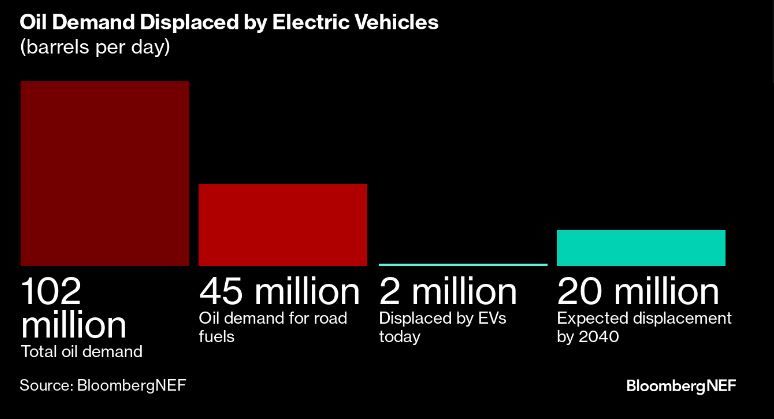
Given such a bold prediction, it's reasonable to expect electric vehicles to dominate the market soon.
This anticipated surge in the market growth of electric vehicles is driven by a combination of technological advancements, consumer awareness, and robust policy support.
As governments tighten emissions regulations and promote cleaner transportation options, the future of electric vehicles looks increasingly promising.
Final Thoughts
Carbon dioxide pollution is one of the burning issues we face globally. Widespread adoption of EVs is the answer to this problem.
With falling carbon intensity of electricity generation and new developments in battery capacities, sustainability of electric cars only grows.
At Ekonenergetyka, we're committed to securing a better future for the electric power sector. Our R&D department is hard at work developing innovative solutions that push the boundaries of what is possible.
If you're interested in learning more about how we can work together to secure a greener future, contact us! We'd love to discuss what we can do to prepare your business for an upcoming electric revolution.
FAQ
Do electric cars reduce carbon emissions compared to conventional vehicles?
Yes, they do! Electric cars operate on electricity rather than gasoline or diesel. This eliminates tailpipe emissions, resulting in lower carbon pollution when running.
Do electric cars generate emissions during their lifecycle?
While electric cars emit no exhaust emissions when driving, emissions are associated with vehicle production, particularly in battery manufacturing.
However, over their lifetime, electric vehicles typically result in lower emissions compared to similar conventional vehicles.
How do emissions from manufacturing the battery impact the overall benefits of electric cars?
These emissions can be higher compared to other parts of the vehicle, but are usually offset by the lower emissions when the car is running. Advances in technology and the use of renewable energy in manufacturing can further reduce these emissions.
What role does the electric vehicle charging process play in emissions?
The environmental benefits of electric vehicle charging depend primarily on the source of electricity. Charging with renewable energy sources like wind or solar results in much lower emissions than charging with coal or natural gas.
